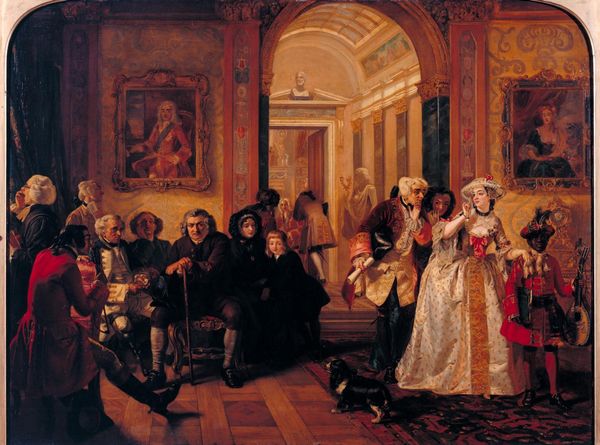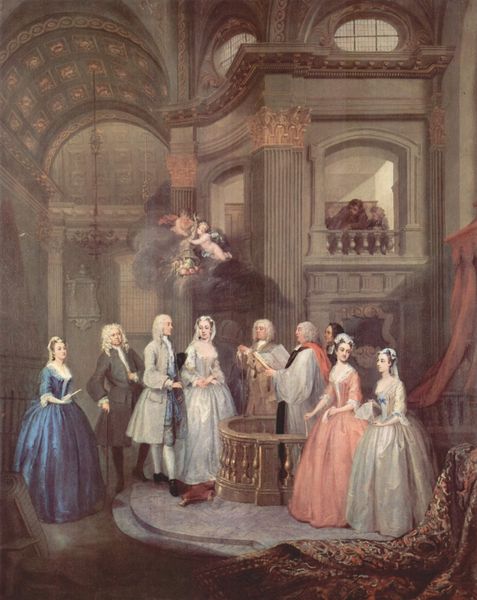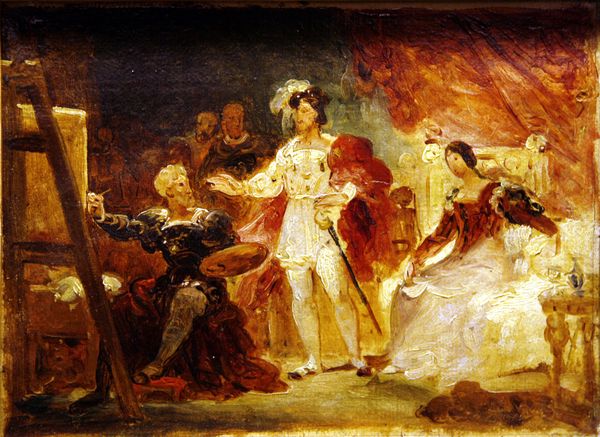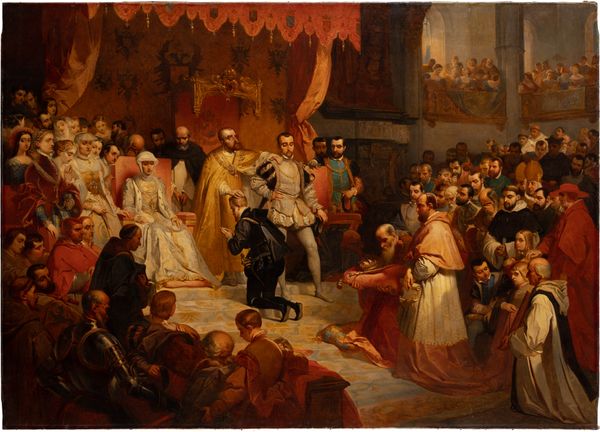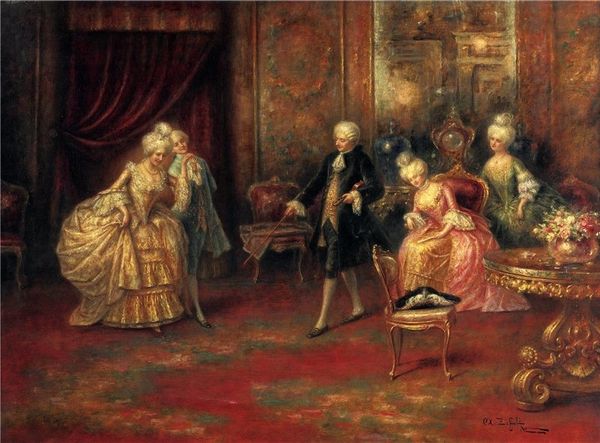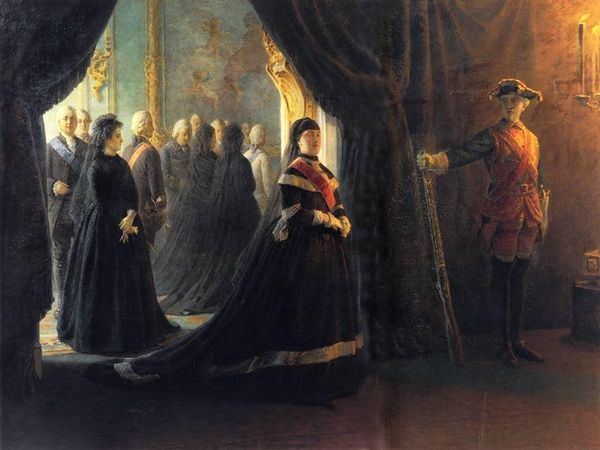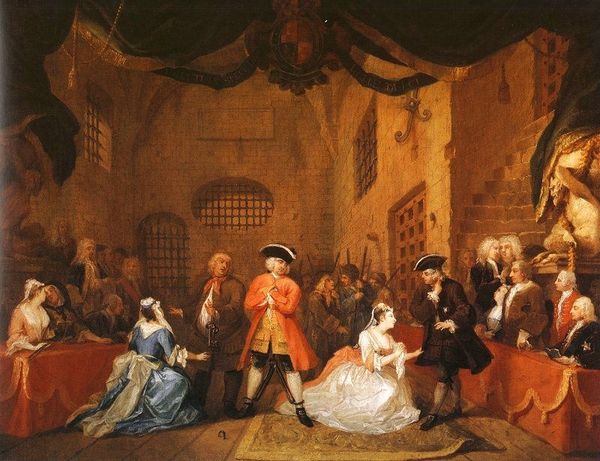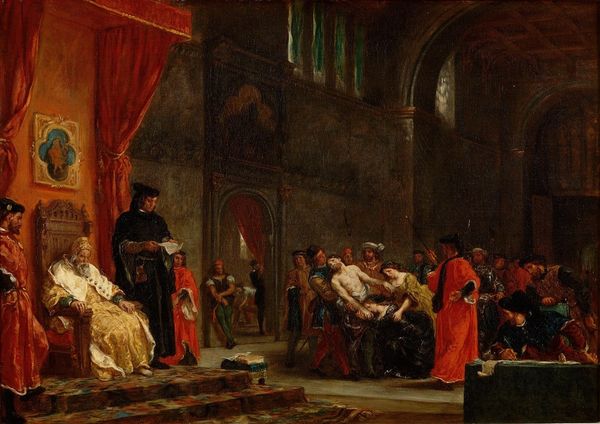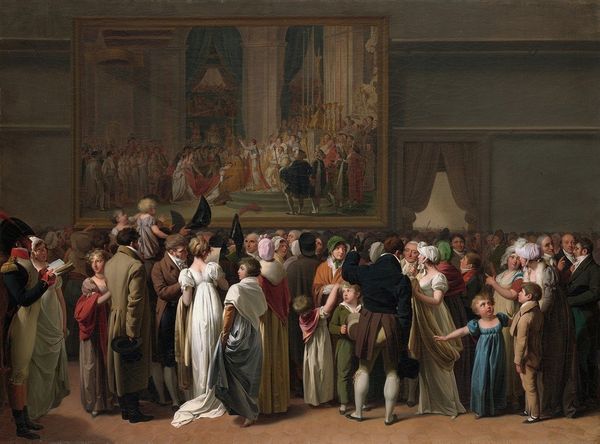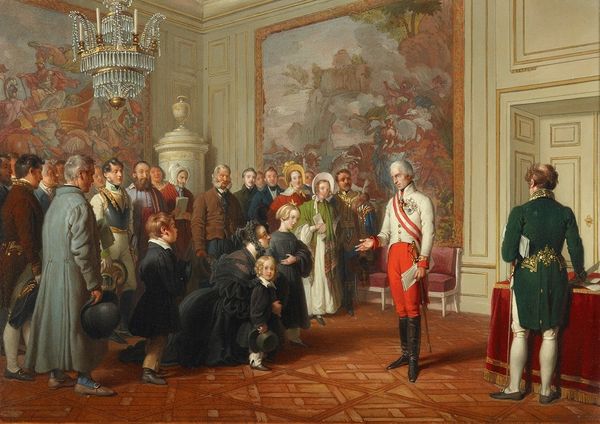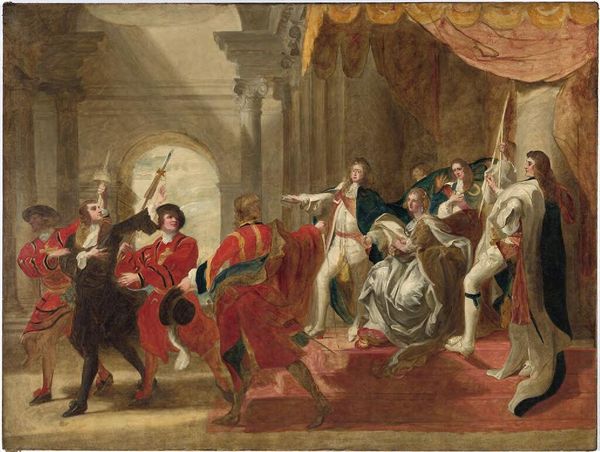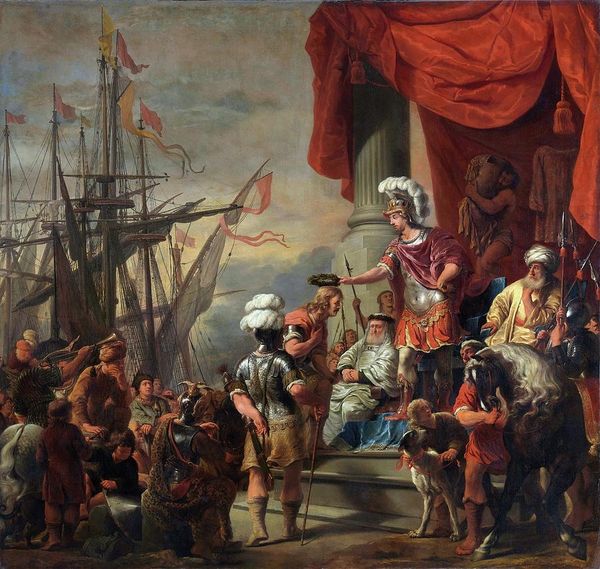
The Disgrace of Lord Clarendon, after his Last Interview with the King - Scene at Whitehall Palace, in 1667 (replica) 1846
0:00
0:00
Dimensions: support: 533 x 737 mm frame: 820 x 1015 x 125 mm
Copyright: CC-BY-NC-ND 4.0 DEED, Photo: Tate
Curator: This is Edward Matthew Ward's, "The Disgrace of Lord Clarendon, after his Last Interview with the King - Scene at Whitehall Palace, in 1667". It is part of the Tate Collection. Look at the scale; it's rather imposing. Editor: Indeed! And the mood is palpable. It feels heavy with...betrayal? The fallen feathers on the ground are an interesting touch. Curator: Ward was a history painter, so let's consider the politics and social context here. Clarendon was a powerful figure, and his downfall reflected shifting power dynamics. Editor: Absolutely, and it’s also a visual commentary on the precariousness of power, particularly for women within the court at that time, a common theme in feminist theory. Curator: It's fascinating how Ward uses this one moment to convey so much about the political climate and the personal tragedies involved. Editor: This painting certainly gives us a lot to think about regarding how those in power are perceived. Curator: Indeed, and it reveals how art can be a powerful tool for social commentary. Editor: A vital perspective to remember when trying to see how women were treated in the court.
Comments
tate 8 months ago
⋮
http://www.tate.org.uk/art/artworks/ward-the-disgrace-of-lord-clarendon-after-his-last-interview-with-the-king-scene-at-n00431
Join the conversation
Join millions of artists and users on Artera today and experience the ultimate creative platform.
tate 8 months ago
⋮
Edward Hyde, 1st Earl of Clarendon (1609-1674) was Lord High Chancellor to Charles II, who was one of England's most colourful and profligate kings. Clarendon was dismissed both as a result of Charles's general neglect of national affairs and because of a court conspiracy against him. The break between the two men took place on 30 August 1667. In this picture, Clarendon is seen leaving the King's palace at Whitehall. The back of Charles can be seen in the distance. Members of the court look on, rejoicing in Clarendon's fall. Gallery label, August 2004
